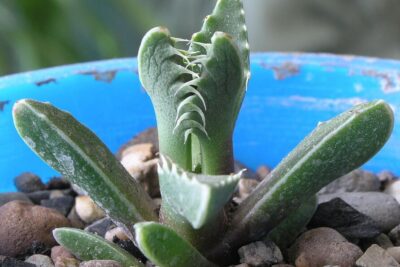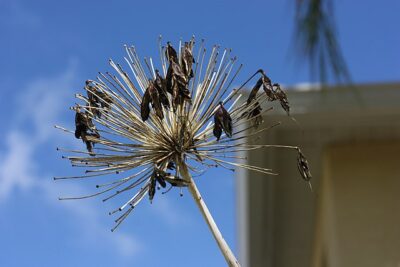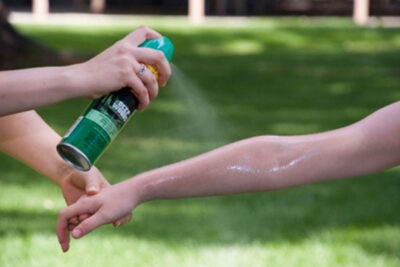
Can Succulents Survive Fire? Fire Safety for Hardy Plants

Succulents are a popular choice for many gardeners and plant enthusiasts due to their unique and low-maintenance nature. These hardy plants have thick, fleshy leaves and stems that allow them to store water, making them well-equipped to survive in arid and drought-prone areas. However, one question that often arises when it comes to succulents is their ability to survive in the face of fire.
We will explore the topic of succulents and their resilience in the event of a fire. We will discuss the adaptations that make succulents fire-resistant, such as their water-storing capabilities and the thick waxy coating on their leaves. Additionally, we will provide tips on fire safety for succulent gardens, including preventative measures and post-fire care. Whether you are a succulent enthusiast or simply want to ensure the safety of your plants, this article will provide valuable insights into the survival of succulents in fire-prone areas.
- Yes, succulents can survive fire with proper care and precautions
- Fire safety measures can be taken to protect succulents during a fire
- Planting succulents in fire-resistant containers can help increase their chances of survival
- Creating a defensible space around succulents can minimize fire damage
- Regularly watering succulents can make them more resilient to fire
- Pruning dead foliage and keeping succulents well-maintained can reduce their flammability
- Placing succulents away from flammable materials and structures can prevent fire accidents
- Installing a proper irrigation system can provide additional fire protection for succulents
- Using fire-resistant mulch or gravel around succulents can act as a barrier against flames
- Seeking professional advice and guidance on fire safety for succulents is recommended
- Frequently Asked Questions
Yes, succulents can survive fire with proper care and precautions
Succulents are known for their ability to withstand harsh conditions, including drought and extreme temperatures. But what about fire? Can these hardy plants survive when faced with such a destructive force?
The answer is yes, succulents can indeed survive fire, but only with the right care and precautions. While succulents are more fire-resistant compared to other plant species, they are not immune to the devastating effects of flames and heat. Therefore, it is essential to take certain steps to protect your succulents and ensure their survival in case of a fire emergency.
Fire Safety Measures for Succulents
1. Plant selection: Choose succulent varieties that are more fire-resistant. Some examples include Sempervivum, Sedum, Agave, and Aloe. These succulents have thicker leaves and a higher moisture content, which can help them withstand extreme heat.
2. Proper spacing: When planting succulents, provide enough space between each plant to prevent the fire from easily spreading. This spacing also allows for better airflow, reducing the risk of fire hazards.
 Identifying Root Rot in Succulents: Yellow Leaves and Soft Stems
Identifying Root Rot in Succulents: Yellow Leaves and Soft Stems3. Watering: Keep your succulents well-watered, especially during dry, hot seasons. Well-hydrated plants are less likely to catch fire and can recover more efficiently if exposed to flames.
4. Mulching: Apply a layer of organic mulch around your succulents. Mulch acts as insulation, protecting the roots and base of the plants from heat damage.
5. Clearing debris: Regularly remove dry leaves, dead plants, and any other flammable materials near your succulents. This reduces fuel for potential fires and minimizes the risk of ignition.
6. Firebreaks: Create firebreaks or clear zones around your succulent garden. These areas should be free from any vegetation or combustible materials, acting as a barrier against the spread of fire.
7. Emergency evacuation: In case of a fire emergency, prioritize your safety and the safety of others. Follow evacuation procedures and leave your succulents behind. While they may withstand the fire, your life is more important.
By implementing these fire safety measures, you can increase the chances of your succulents surviving a fire incident. However, it is crucial to remember that no plant is entirely fireproof. Therefore, always stay vigilant and take necessary precautions to minimize fire risks to your succulent garden.
Fire safety measures can be taken to protect succulents during a fire
 Causes of White Spots on Succulent Leaves: A Comprehensive Guide
Causes of White Spots on Succulent Leaves: A Comprehensive GuideWhen it comes to fire safety for hardy plants like succulents, taking necessary precautions can make all the difference in ensuring their survival. While succulents are known for their ability to withstand harsh conditions, wildfires pose a significant threat to their existence. By implementing a few fire safety measures, you can increase the chances of your succulents surviving a fire.
1. Create a defensible space
One of the most effective ways to protect your succulents from fire is by creating a defensible space around them. This involves removing any dry or dead vegetation within a certain radius of the plants. Clearing away flammable materials such as dry leaves, twigs, and debris can help prevent the fire from spreading to your succulents.
2. Use fire-resistant materials
Choosing fire-resistant materials for your succulent garden can provide an added layer of protection. Opt for non-combustible pots, such as clay or metal containers, instead of plastic. Additionally, consider using gravel or rocks as ground cover, as they are less likely to ignite compared to mulch or wood chips.
3. Water your succulents regularly
Keeping your succulents well-hydrated is crucial for their fire survival. Ensure that you water them regularly, especially during hot and dry periods. Well-hydrated plants are less susceptible to catching fire, as the moisture content in their leaves makes it difficult for flames to ignite.
4. Prune and remove dead foliage
Regularly pruning your succulents and removing dead foliage not only promotes their overall health but also minimizes the risk of fire. Dead leaves and stems can act as fuel for a fire, allowing it to spread quickly. By maintaining your succulents and removing any dead parts, you reduce the chances of the fire taking hold.
5. Have an evacuation plan
While taking fire safety measures is crucial, it is also important to have an evacuation plan in place. If a wildfire is approaching, prioritize your safety and the safety of your loved ones. Have a plan to quickly and safely evacuate your home, leaving your succulents behind if necessary. Remember, plants can be replaced, but lives cannot.
By implementing these fire safety measures, you can better protect your succulents and increase their chances of survival during a fire. Remember to stay informed about fire risks in your area and follow any official guidelines or evacuation notices. Stay safe and ensure the well-being of both you and your hardy plants.
 Why Your Succulent Died Overnight and How to Prevent It
Why Your Succulent Died Overnight and How to Prevent ItPlanting succulents in fire-resistant containers can help increase their chances of survival
Succulents are known for their ability to survive in harsh conditions, but can they survive a fire?
Succulents are hardy plants that have adapted to survive in arid environments with limited water resources. Their thick, fleshy leaves and stems help them retain water, making them more resistant to drought. However, when it comes to fire, even succulents can face challenges.
During a fire, succulents can be damaged or destroyed due to the intense heat and flames. The high temperatures can cause the plants to dry out rapidly, leading to dehydration and ultimately death. Additionally, the flames can scorch or burn the succulents, damaging their foliage and stems.
To increase the chances of your succulents surviving a fire, it is important to take proactive steps to protect them. One effective method is to plant succulents in fire-resistant containers.
Choosing fire-resistant containers
When selecting containers for your succulents, opt for materials that are less likely to catch fire or melt during a blaze. Some suitable choices include ceramic, clay, or metal containers. These materials have a higher resistance to heat compared to plastic or wood, minimizing the risk of your succulents being exposed to direct flames.
Furthermore, consider the size and shape of the containers. Wide and shallow containers are more stable during a fire, reducing the likelihood of them tipping over and spilling their contents. Ensure that the containers have drainage holes to prevent water from accumulating and potentially becoming a breeding ground for pests or diseases.
Positioning your succulent containers strategically
The placement of your succulent containers can also play a role in their survival during a fire. Place them away from potential fire hazards, such as flammable materials or structures. Keep them at a safe distance from buildings, fences, or trees that could catch fire easily.
 Are Mother of Thousands Succulents Toxic to Pets?
Are Mother of Thousands Succulents Toxic to Pets?If you live in an area prone to wildfires, creating a defensible space around your property can also help protect your succulents. Clearing dry vegetation and maintaining a buffer zone between your succulents and potential sources of fire can reduce the risk of the flames reaching your plants.
Regular maintenance and care
Lastly, proper maintenance and care can make a significant difference in the resilience of your succulents. Regularly remove dead leaves and debris from your succulent containers, as they can act as fuel during a fire. Additionally, ensure that your succulents are well-hydrated by providing them with adequate water, especially during dry and hot periods.
Remember, while succulents are hardy plants, they are not invincible against fires. By taking proactive measures to protect your succulents and planting them in fire-resistant containers, you can increase their chances of survival in the face of a fire.
Creating a defensible space around succulents can minimize fire damage
When it comes to fire safety for hardy plants like succulents, creating a defensible space is crucial. Succulents have adapted to survive in arid environments, making them more resilient to certain conditions. However, they are not immune to the devastating effects of a fire.
By creating a defensible space around your succulents, you can help minimize the potential damage caused by a fire. A defensible space refers to an area surrounding your plants that is strategically designed to reduce fire risk and provide firefighters with a safe zone to work from.
Here are some tips for creating a defensible space around your succulents:
- Clear vegetation: Remove any dead or dry vegetation, such as fallen leaves, twigs, or branches, that could act as fuel for a fire. Regularly clean the area around your succulents to keep it free from flammable materials.
- Maintain proper spacing: Ensure that your succulents are adequately spaced apart. By providing enough distance between plants, you can prevent fire from easily spreading from one succulent to another.
- Use non-flammable mulch: Consider using non-flammable mulch materials, such as rocks or gravel, instead of organic mulch. Organic mulch can easily catch fire and increase the risk of damage to your succulents.
- Water regularly: Keep your succulents well-watered to maintain their health and vitality. Moist plants are less likely to catch fire compared to dry ones. However, be mindful of water restrictions and use water responsibly.
- Trim and prune: Regularly trim and prune your succulents to remove any dead or dry leaves. This not only improves their appearance but also reduces the amount of flammable material present.
Remember, even with a defensible space in place, it's essential to stay vigilant and take additional precautions to prevent fires. Regularly check your succulents for any signs of stress or disease and address them promptly. By implementing these fire safety measures, you can help protect your hardy succulents from potential fire damage.
 Identifying Root Rot: Spotting Unhealthy and Healthy Roots
Identifying Root Rot: Spotting Unhealthy and Healthy RootsRegularly watering succulents can make them more resilient to fire
When it comes to fire safety for hardy plants, succulents are often overlooked. However, these resilient plants can actually withstand fire to a certain extent. One way to enhance their ability to survive fire is through regular watering.
Succulents, known for their ability to store water in their leaves and stems, have evolved to thrive in arid environments. This natural adaptation not only helps them survive in dry conditions but also provides them with some level of fire resistance. By regularly watering your succulents, you can ensure that their water reserves are replenished, making them more resistant to the scorching heat of a fire.
Watering your succulents doesn't mean drowning them. These plants are adapted to survive with minimal water, so a light watering every two weeks should be sufficient. Avoid overwatering, as it can lead to root rot and other issues. It's important to strike a balance and provide enough moisture to keep your succulents healthy and prepared for any potential fire hazards.
In addition to watering, there are other measures you can take to protect your succulents from fire damage. Here are a few tips:
1. Clear debris and flammable materials
Remove dry leaves, dead plants, and any other flammable materials from the vicinity of your succulents. This will reduce the chances of a fire spreading to your plants.
2. Create defensible space around your succulents
Keep a clear zone around your succulents by removing any vegetation or combustible materials. This creates a barrier that can help prevent the fire from reaching your plants.
 Managing White Fuzz on Succulents: Causes and Solutions
Managing White Fuzz on Succulents: Causes and Solutions3. Use fire-resistant mulch
Consider using fire-resistant mulch around your succulents. This type of mulch is made from materials that are less likely to ignite and can provide an additional layer of protection.
4. Keep succulents away from flammable structures
Avoid planting succulents too close to structures such as wooden fences or buildings. If a fire occurs, these structures can quickly catch fire and pose a threat to your plants.
By implementing these fire safety measures and regularly watering your succulents, you can significantly increase their chances of surviving a fire. While no plant is completely fireproof, taking proactive steps can make a big difference in protecting your beloved succulents.
Pruning dead foliage and keeping succulents well-maintained can reduce their flammability
When it comes to fire safety for hardy plants like succulents, proper maintenance plays a crucial role in reducing their flammability. By regularly pruning dead foliage and keeping your succulents well-maintained, you can significantly lower the risk of fire.
Why is pruning important?
Pruning is the process of removing dead or decaying parts of a plant. In the case of succulents, it is essential to remove any dry or dead leaves, stems, or flowers. These dried plant parts can become highly flammable and easily ignite in case of a fire.
By regularly inspecting your succulents and removing any dead or dried parts, you can minimize the potential fuel for a fire. Pruning also helps maintain the overall health and appearance of your succulents, promoting new growth and preventing diseases.
 Ant-Free Succulents: Effective Ways to Eliminate Ants
Ant-Free Succulents: Effective Ways to Eliminate AntsHow to prune succulents?
Pruning succulents is a straightforward process that can be done using a few simple tools. Here's a step-by-step guide to help you prune your succulents effectively:
- Start by wearing protective gloves to avoid any injuries or skin irritation.
- Inspect your succulent plant and identify any dead or dried parts that need to be pruned.
- Using sharp and clean pruning shears, carefully remove the identified dead foliage, stems, or flowers.
- Make clean cuts close to the base of the plant, ensuring no stubs are left behind.
- Dispose of the pruned plant parts safely, away from any potential fire hazards.
- After pruning, monitor your succulents regularly and repeat the process whenever necessary.
Other maintenance tips
In addition to pruning, there are a few other maintenance practices you can follow to enhance fire safety for your succulents:
- Remove dried debris: Regularly remove dried leaves, twigs, or any other debris that may accumulate around your succulents. These can easily catch fire and spread to the plants.
- Provide adequate spacing: Ensure that your succulents are adequately spaced apart, allowing air circulation and preventing the rapid spread of fire.
- Water properly: Overwatering succulents can lead to weak and flammable foliage. Water your succulents sparingly and only when the soil is dry.
- Choose fire-resistant varieties: Some succulent varieties are naturally more resistant to fire than others. Consider planting fire-resistant succulents to further enhance your garden's safety.
By following these fire safety measures and maintaining your succulents properly, you can enjoy their beauty while minimizing the risk of fire.
Placing succulents away from flammable materials and structures can prevent fire accidents
Succulents are known for their ability to survive in harsh conditions, including extreme heat and drought. However, when it comes to fire, these hardy plants can still be at risk if not properly protected. Placing succulents away from flammable materials and structures is essential to prevent fire accidents and ensure the safety of your plants.
Why are succulents at risk during fires?
Succulents may seem resilient, with their thick leaves and water-storing capabilities, but they can still be vulnerable during fires. The high temperatures and intense heat generated by flames can cause damage to their delicate tissues and result in irreversible harm. Additionally, succulents can catch fire easily if they come into contact with flammable materials or are exposed to open flames.
Tips for fire safety with succulents
To protect your succulents from fire accidents, follow these important fire safety tips:
- Choose the right location: When planting succulents in your garden or placing them in indoor pots, ensure they are positioned away from flammable materials such as dry leaves, wood chips, or highly combustible structures.
- Keep a safe distance: Maintain a safe distance between succulents and potential fire hazards like grills, fire pits, or outdoor heaters. This precautionary measure will reduce the risk of accidental fires reaching your plants.
- Regularly clear dry debris: Regularly remove dry leaves, dead plants, or any other flammable debris from the vicinity of your succulents. This helps minimize potential fuel for fires and keeps your plants safe.
- Use fire-resistant materials: When creating succulent arrangements or planting them in outdoor containers, opt for fire-resistant materials like ceramic pots or metal containers. These materials are less likely to catch fire and can provide an extra layer of protection.
- Be cautious with watering: While succulents require less water compared to other plants, it's important to water them carefully. Avoid overwatering, as excessive moisture can make succulents more susceptible to fire damage.
By taking proactive measures to place succulents away from flammable materials and structures, you can significantly reduce the risk of fire accidents and ensure the survival of your beloved plants. Prioritizing fire safety not only protects your succulents but also safeguards your property and the well-being of those around you.
 Signs of a Dying Succulent: Understanding Leaf Loss
Signs of a Dying Succulent: Understanding Leaf LossInstalling a proper irrigation system can provide additional fire protection for succulents
When it comes to fire safety for succulents, installing a proper irrigation system can play a crucial role in protecting these hardy plants. Succulents are known for their ability to store water in their fleshy leaves, stems, or roots, making them more resistant to drought conditions. However, this does not mean they are immune to the dangers of fire.
During a fire, succulents can become vulnerable due to their high water content, which can cause them to burn more easily. While some succulents may have a higher chance of survival due to their fire-resistant properties, it is still important to take precautionary measures to protect them.
Why is an irrigation system important?
An irrigation system can provide additional fire protection for succulents in several ways:
- Moisture: By regularly watering your succulents, you can ensure that they maintain adequate moisture levels. This can help prevent them from becoming dry and brittle, making them less susceptible to catching fire.
- Creating a barrier: Installing an irrigation system around your succulents can create a moist barrier, acting as a buffer between the plants and the fire. This can help slow down or prevent the fire from reaching the succulents directly.
- Smoke reduction: An irrigation system can help reduce the amount of smoke produced during a fire. Smoke inhalation can be harmful to succulents, so minimizing smoke can increase their chances of survival.
Types of irrigation systems for fire protection
There are different types of irrigation systems that can be used to provide fire protection for succulents:
- Drip irrigation: This system delivers water directly to the base of the plants, ensuring efficient water distribution and reducing water waste.
- Sprinkler system: Sprinklers can be installed strategically to cover the entire succulent garden. When activated, they release water in a spray-like pattern, effectively dampening the area and surrounding plants.
- Misting system: Misting systems create a fine mist of water that can help cool down the surrounding area, making it less prone to ignition.
When choosing an irrigation system for fire protection, it is essential to consider factors such as the size of your succulent garden, water availability, and your specific needs.
Remember, while an irrigation system can provide additional fire protection for succulents, it is still important to practice other fire safety measures, such as creating defensible space around your garden, removing dry vegetation, and following local fire safety guidelines.
 Can Succulents Trigger Allergies in Certain Individuals?
Can Succulents Trigger Allergies in Certain Individuals?By installing a proper irrigation system and implementing fire safety measures, you can help increase the chances of your succulents surviving a fire and ensure their long-term health and beauty.
Using fire-resistant mulch or gravel around succulents can act as a barrier against flames
When it comes to fire safety for succulents, one simple but effective measure is using fire-resistant mulch or gravel around these hardy plants. This can act as a barrier, preventing the flames from reaching the succulents and potentially causing irreparable damage.
Fire-resistant mulch is made from materials that naturally resist combustion, such as rock, stone, or certain types of shredded bark. These materials can help slow down or even stop the progression of flames, protecting the succulents and giving them a better chance of survival in case of a fire.
Gravel is another excellent option for creating a fire-resistant barrier around succulents. It doesn't ignite easily and can help prevent the fire from spreading to the plants. Additionally, gravel can also aid in water drainage, which is beneficial for succulents as they prefer well-draining soil.
When applying fire-resistant mulch or gravel, make sure to create a layer that is at least three inches thick. This thickness provides better insulation against heat and flames. It's also important to regularly check and maintain the mulch or gravel layer to ensure its effectiveness over time.
Note: While using fire-resistant mulch or gravel can help protect succulents from fire, it's crucial to remember that no measure is foolproof. In case of an approaching wildfire or any other fire hazard, it's always recommended to follow local authorities' instructions and evacuate if necessary.
 Protecting Your Garden: Understanding if Rabbits Will Eat Succulents
Protecting Your Garden: Understanding if Rabbits Will Eat SucculentsSeeking professional advice and guidance on fire safety for succulents is recommended
When it comes to fire safety and protecting your succulent plants, it is important to consult with professionals who specialize in this area. While succulents are known for their hardiness and ability to withstand harsh conditions, it is crucial to understand the specific precautions needed to ensure their survival in the event of a fire.
Here are a few key points to consider when seeking professional advice:
1. Assessing the fire risk in your area
Consulting with fire safety experts will allow you to understand the specific fire risks in your location. They can provide valuable insights into the likelihood and severity of fires in your area, helping you determine the necessary precautions for protecting your succulents.
2. Identifying fire-resistant succulent species
Experts can help you identify succulent species that are more resistant to fire. Certain succulents have thicker leaves or specialized adaptations that make them better equipped to survive in fire-prone environments. By selecting the right species, you can increase the chances of your succulents surviving a fire.
3. Creating defensible space around your succulents
Fire safety professionals can guide you in creating a defensible space around your succulents. This involves removing flammable materials, such as dead leaves or debris, from the immediate vicinity of your plants. Additionally, they can advise on proper spacing between succulents to reduce the spread of fire.
4. Implementing fire-resistant landscaping techniques
Experts can recommend fire-resistant landscaping techniques to safeguard your succulents. This may include using non-flammable mulch, selecting fire-resistant ground cover plants, and incorporating hardscaping elements like rocks or gravel to create fire breaks.
5. Developing an emergency evacuation plan
Professional guidance can also assist you in developing an emergency evacuation plan for your succulents. They can help you identify the safest location to relocate your plants temporarily in case of a fire and provide tips on how to minimize damage during the relocation process.
Remember, every situation is unique, and seeking professional advice tailored to your specific circumstances is crucial for ensuring the safety and survival of your succulents in the face of a fire.
Frequently Asked Questions
1. Can succulents survive fire?
Yes, many succulents have adaptations that allow them to survive and recover from fire. Their thick, water-storing leaves and stems help them withstand extreme heat and drought conditions.
2. How do succulents survive fire?
Succulents have various strategies for surviving fire. Some species have underground root systems that protect them from heat, while others can regenerate from their roots or produce new shoots after a fire.
3. Are all succulents fire-resistant?
No, not all succulents are fire-resistant. While many succulents have natural fire-resistant properties, some species may still be susceptible to damage or even death in a fire. It's important to research the specific succulent species before assuming their fire resistance.
4. How can I protect my succulents from fire?
To protect your succulents from fire, you can create defensible space around your garden by removing dry vegetation and maintaining a safe distance between plants. Additionally, consider using fire-resistant mulch and avoiding planting highly flammable plants near your succulents.
If you want to read more articles similar to Can Succulents Survive Fire? Fire Safety for Hardy Plants, you can visit the Pests and Diseases category.






You Must Read